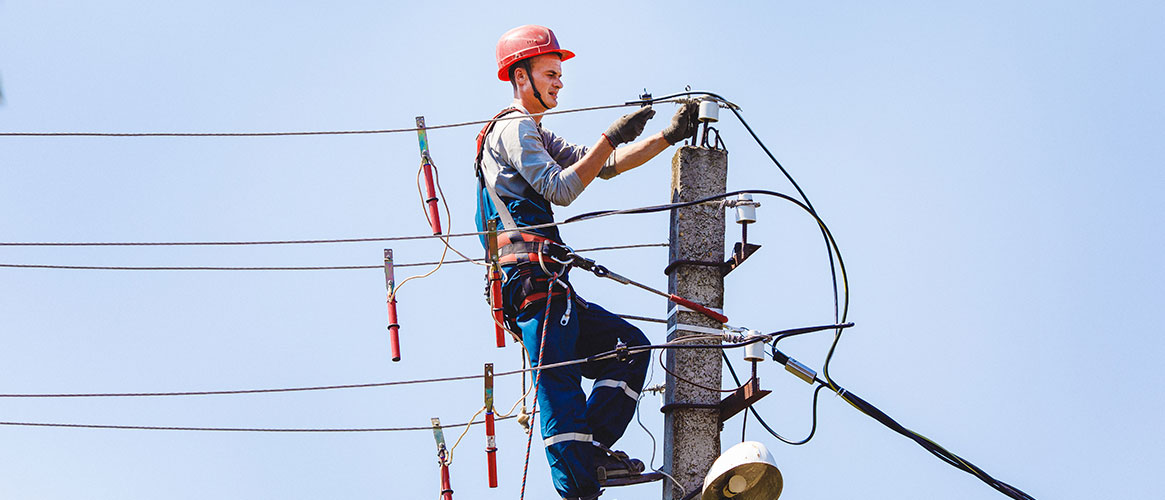Electric power line workers come in contact with high-voltage power lines making their jobs very dangerous. Workers perform their job in different environments such as at the top of a utility pole, in a confined space, or in a trench. All are at risk of electrocution and burns. Those working from heights are also at risk of falls. Therefore, it’s important that your employees are properly trained, use the proper lockout/tagout procedures, and use the correct safety equipment, such as insulated protective clothing and tools. They also need to know safe handling of hand tools, power tools, chemicals, and other equipment that they work with.
Only qualified electrical workers may work on energized conductors or equipment connected to energized high-voltage systems (equal or greater than 600 volts). A qualified electrical worker is a person:
- That has at least two years of training and experience with high-voltage circuits and equipment
- Has shown that they know how to perform the work
- Who understands the hazards involved
One exception to this rule comes in cases of emergency—such as a life-threatening situation or when immediate action is needed to restore power: either a qualified electrical worker or experienced employee-in-training must be available.
Power line work
Power line work to repair and restore power in emergencies occurs year-round and often in remote areas, during bad weather, or natural disasters. Here are some steps your employees need to follow in order to stay safe:
- Whenever possible, employees should have at least one coworker nearby so they are not working alone.
- If an employee has to work alone, they must alert other coworkers when work will be complete and what their estimated return time is.
- Wear light layers that protect you from the weather conditions.
- Use reflective gear to keep you visible along roadways.
Working from heights
For those working in elevated areas such as power poles or towers, they must be trained on fall protection, equipment, and rescue procedures. This also includes:
- How to hoist your materials safely
- Safe operation of bucket trucks
- Using fall protection equipment properly and inspecting it for damage
Working in trenches
While working in trenches, installation workers use construction equipment such as augers, trenchers, diggers, and cranes. To help ensure your employees stay safe:
- Train them on the proper construction equipment to use as well as trenching safety, how to dig, maintain, barricade, shoring, and entering a trench safely.
- Have them inspect and maintain the equipment to ensure it runs properly and that the safety features (e.g. backup horns, emergency lights) work.
- Make sure they understand the hazards involved, including engulfment.
Working in confined spaces
If your employees work in confined spaces such as vaults or power utility holes, they need to:
- Monitor the environment for hazards.
- Wear the proper personal protective equipment (PPE). Depending on the potential hazards your workers are facing, PPE may include a self-contained breathing apparatus, a safety belt and line, and the insulated gloves and tools mentioned earlier.
- Ensure a safe exit by having the necessary back up team.
Electric power line workers have dangerous jobs. They regularly work from heights, in tight spaces, or in trenches—each of which presents its own set of challenges including exposure to electrocution and burns. Talk to them today about the risks they face and steps to take to ensure their safety.
